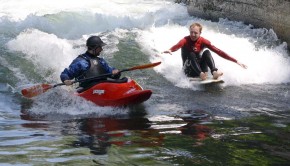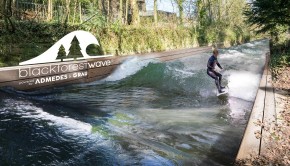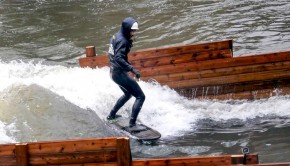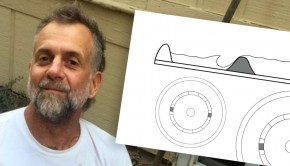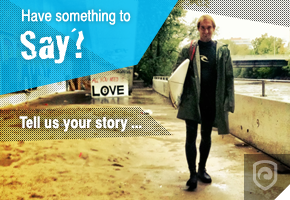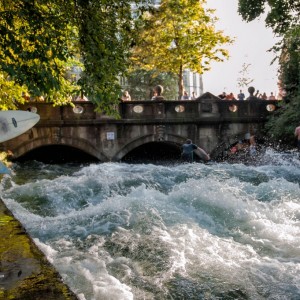Consistency Builds Surf Communities
I, like many of you, spend most of my free time each Spring and Summer searching for the biggest, fastest, widest waves around. And when I’m not on the hunt I’m probably day dreaming about it. How do these waves impact river surfing? Do they build vibrant surf communities? In a lot of cases the honest answer is no.
Although these waves play an invaluable role in shaping culture and are the apex of high-performance surfing, their often fickle nature and remote locales lack the consistency a surf community needs to establish and grow. My experience building surf waves and surfing river waves all over has lead me to this conclusion – consistency builds surf communities. When you have both consistency and quality it’s pure magic, think Eisbach or Boise.
Case in point, look at Boise, Idaho where they can surf year-round. This consistency combined with the quality wave produced by their WaveShaper has fostered an establish surf community including custom board builders like Chris Peterson and a surf shop (Corridor Surf) 500 miles from the coast.
When you have both consistency and quality it’s pure magic, think Eisbach or Boise.
As someone who believes building more surf waves is the future of river surfing, I want successfully built waves in as many places as possible. The reality is that most cities and towns have what I call a “Goldie Locks problem” – this river is too big, this one is too small, and this one is just right. The “just right” rivers are few and far between. Although we have built waves is some very large rivers, they are very expensive and even more challenging than waves in smaller river. For this reason, I have been keenly interested in pushing the limits of building smaller more consistent waves that are also high performance while being more economical to build.
6 years ago, as a surfer in the once small fragmented surf community in Denver where there are very few waves of decent quality and consistency, a golden opportunity arose when local river advocates asked us to transform a degraded stretch of the South Platte into a healthy river with vibrant recreation. Of course, we decided immediately that a surf wave needed to happen. One huge problem – there is very little water (typically 200 cfs or less). We had been planning and designing for several years.
What was maybe two dozen strong before the wave build is now hundreds of surfers and growing.
When I visited Salzburg, Austria in 2014, I saw firsthand the amazing community and level of surfing at the small Alm Canal Wave. It was living proof that this was possible but I was somewhat skeptical it would work as well in a river with varying flows and conditions. We still had some serious challenges to work out. In the end we were able to design a WaveShaper adjustable wave to get the quality and consistency we were aiming for. After two full seasons it is truly incredible how both the size and diversity of the surf community has flourished. What was maybe two dozen strong before the wave build is now hundreds of surfers and growing.
Low flow waves maybe great but you may ask “so what?” The significance, to me, is there are far more places that waves are possible than we all previously thought. More rivers, more waves, more surfing, more fun. Unlocking low flow waves will help cure the Goldie Locks problem. Yes we will continue to see waves built in big and medium sized rivers but I have a feeling we will see even more in small rivers. Watch out for bears Goldie Locks and go surf a river!
By Ben Nielsen, P.E. McLaughlin Whitewater Design Group
-
Torus Smith


